Are you thinking of having PV solar panels installed in Westbury? You're not alone, as thousands of people are choosing renewable energy to reduce reliance on fossil fuels and to lower the cost of energy bills.
You might know a little bit about solar panels and how they are installed, but it's always worth doing your homework before going ahead with any project of this size. After all, this will be a sizeable investment, so it's best to learn about the process so you understand exactly what's going on.
As a professional solar PV panel installation company in Westbury, Skylamp Solar is perfectly placed to tell you all you need to know. We've compiled this guide to do just that - by the end, you'll have all the information you need to decide whether a solar PV system is the right choice for you. You will also know what's involved in the installation process, and you'll learn many other fascinating facts besides!
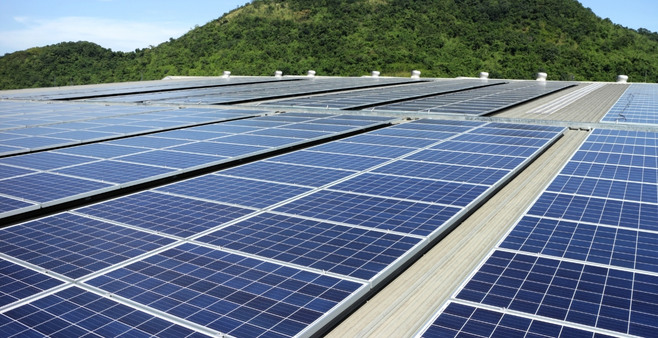
First, let's deal with the issue of the difference between PV panels and thermal panels.
If you didn't realise that there was a difference, don't worry; many people believe that solar panels are all the same. However, it is vital that you know which is which as they both perform very different functions.
In the past, most solar panels were designed to use the sun's energy to heat air or water, hence the term thermal. Although these are still used today, and the technology has improved in recent years, consumers are showing more interest in solar PV panels (we'll learn why in a moment).
This type of panel uses simpler technology: the sun's rays are absorbed by collectors to heat fluid which is then pumped through a sealed circuit that passes through a hot water cylinder. Essentially, this means that you get free hot water once the equipment has been installed.
Thermal panels, though generally more expensive to fit than PV panels, are around 70% more energy efficient than their counterparts.
These days, when people talk about solar panels, they usually mean solar PV. So, what does this mean and what's the difference?
First of all, PV means photovoltaic, referring to special cells inside the panel:
So, light particles from the sun's energy are transformed into usable electricity, making it a much more versatile option than thermal solar panels. Not only do you get free energy, but you can also sell surplus electricity back to the national grid!
This is the main reason why solar PV installation is proving much more popular than the thermal version. Here you can read more on what is solar PV .
These are the newest types of solar panel systems on the market today that combine the benefits of solar thermal systems by heating water and also converting the sun's energy into excess electricity to sell back to the grid. We also have a hybrid solar panel installation service.
We touched on this briefly, but let's look more closely at the technology involved.
Photovoltaic solar panels are set up in an array, usually comprising several panels. Inside each panel are photovoltaic cells coated with a thin film of silicon, which is a semiconductor.
Light particles (photons) hit the cells and the silicon inside, causing electrons to be knocked off the surface which generates an electrical charge known as the photovoltaic effect. This is collected and channelled through to an inverter as DC electricity, where it is converted into an AC current.
After this, it goes through to a meter and a fuse box ready for use anywhere within the property.
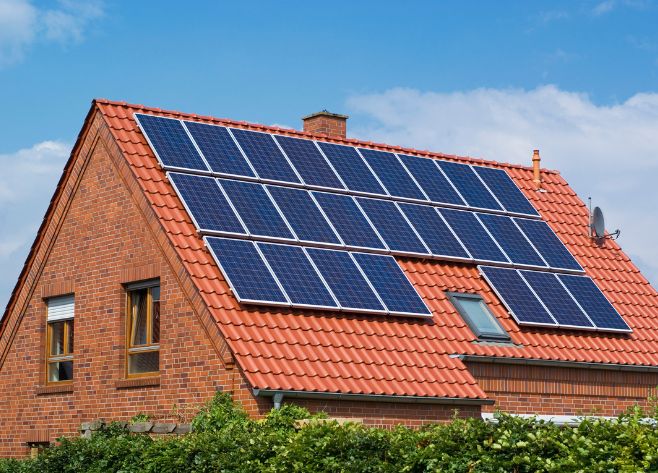
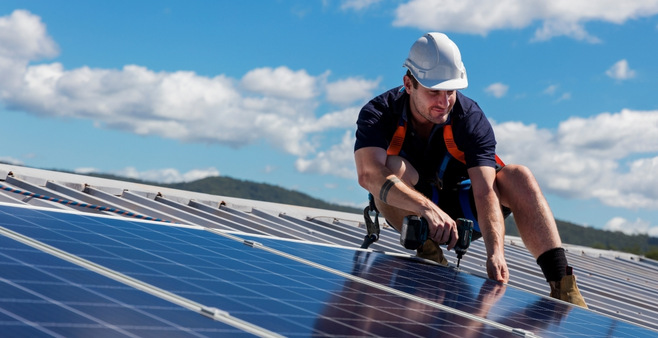
Before any work takes place, we need to know what type of roof your home in Westbury has. You also need to be absolutely certain that no planning permission is required (see below for more details).
Let's deal with the type of roof first:
Arguably, asphalt and composite materials (recycled rubber, paper, fibreglass etc.) are better suited, as these make it easier to install solar panels. Also, if you have a standing metal roof, this would be ideal (and cheaper!) as the raised seam allows the installers to affix the panels quickly and easily.
Conversely, ceramic tiles are questionable, as they can crack during the fitting process. The same applies to slate, which is even more brittle than ceramic. It's not impossible to fit solar panels on these types of roofs, but it can be very tricky. It can also mean extra work and increased installation costs.
Finally, wood and thatch are no good, partly because of the fire risk, but also because thatch would rot and there's nowhere to attach the panels.
For maximum efficiency, your roof should ideally have a pitch of between 30 and 45º. Solar PV systems will work on roofs outside this range but at reduced efficiency.
Solar panels work even on a flat roof, as they can be angled using a frame to ensure they catch the sun's rays.
Also, the direction of your roof has a bearing on efficiency. For the very best results, a south-facing roof is ideal as it makes the most of the sunshine throughout the day. Even so, solar panels don't require direct sunlight and will still work on north-facing roofs, though again, at reduced efficiency.
Concerns have also been raised about location within the UK, as customers question whether solar panels work very well in the north. While it's true that homes in south-west and south-east England get more sunlight, the difference in terms of electricity produced isn't that significant.
Solar panel installations should only ever be undertaken by professionals. This is complex equipment that can be damaged if mishandled or fitted incorrectly.
That's why it's always best to contact trained experts like Skylamp Solars Westbury team to do this job.
Here's an outline of a typical solar PV system installation:
This is an essential part of the process that must take place before any work begins. If a contractor offers to go ahead without this step, they are acting irresponsibly and should be avoided.
The roof should be inspected for any damage and to ensure that it is safe to work on. They will assess the load capacity and gauge whether it can take the weight of solar panels.
The structural survey must be carried out by a qualified person and this will involve a thorough physical examination of the loft space.
The rafters, truss connector plates and all structural elements will be checked for woodworm and rot, and measurements will be taken to calculate the correct size of the array and determine the type of fittings required.
Scaffolding will be erected and certified to give access to the roof before any work commences.
This is to ensure the safety of the contractors as they must have a safe working platform throughout the installation process. Working at height can be hazardous, and we always insist that health and safety protocols are followed to reduce the risk of accidents or injuries as much as possible.
This is one of the most difficult steps, requiring skill and precision. The mounts must be attached securely and at the correct angle to get the optimum amount of sunlight. And all this must be done while taking care not to damage the roof. Skylamp Solar installers are trained to work carefully and efficiently, getting the job done without causing damage.
The appropriate number of solar panels will be fixed to the mounts and double-checked to make sure they are secure and angled correctly to catch the most sunlight.
During this technical process, it will be necessary to switch off the electricity supply to ensure the safety of the workers. This is a highly-skilled job, and it is essential that a qualified person carries out the work. Thankfully, you're Westbury Skylamp Solar team is fully trained and qualified for the task.
The inverter is the 'brain' of the solar PV system. It makes sure the array is working properly and safely, as well as ensuring that it is operating at maximum power output. It also communicates with the national grid and provides feedback on power production.
One other vital role it plays is in converting the charge, as solar panels carry this as DC electricity and the inverter transforms it into AC electricity. This matches the current that is supplied by the grid, and any electricity you sell back to them has to be AC.
There are several different types of solar inverters, and we'll discuss which one is best for your system when you arrange your solar system fitting. You can read more here on “what size inverter do I need for my solar panels”.
The solar inverter is connected to a battery so that any excess electricity can be stored overnight or sent to the grid.
Although battery storage is optional, it makes good economic sense if you want the best energy savings. For example, as soon as the sun sets at night, your solar power system will no longer generate electricity. Unless you have battery storage you'll be without power, or you'll need to rely on an energy company to provide it through the nighttime hours. This will mean higher electricity bills, which is probably one of the issues you are trying to avoid.
The consumer unit is what most of us know as a fuse box or fuse board. Without this step, your solar panels would be pretty useless! From here, it is connected to a meter so you can monitor your energy consumption.
The Skylamp Solar team will run tests to make sure that the panels are generating electricity and that all of the equipment is functioning as it should. The team will only sign off the job and leave the site when they are satisfied that your solar PV system is running perfectly.
The scaffolding will be taken down carefully and the team will perform a general tidy-up around the site. We always endeavour to leave the working area clean and free from debris or clutter that takes place during the installation.
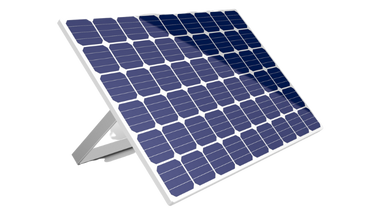
On average, domestic solar panel systems take between one and two days, although this can be affected by a range of factors.
Please bear in mind that unforeseen circumstances might cause a delay in the work. While this rarely pushes up the installation cost as agreed with the client, it might mean that we are onsite for longer as we strive to provide high-quality installations.
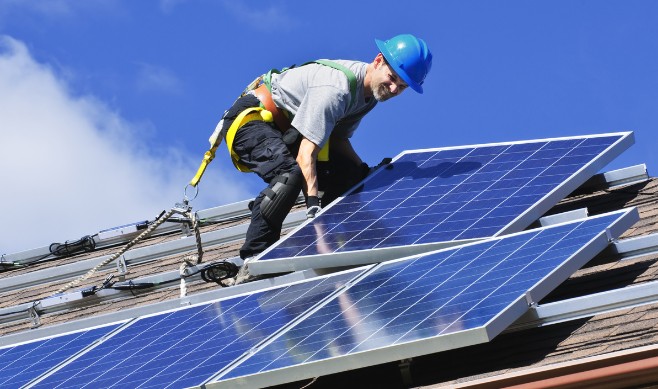
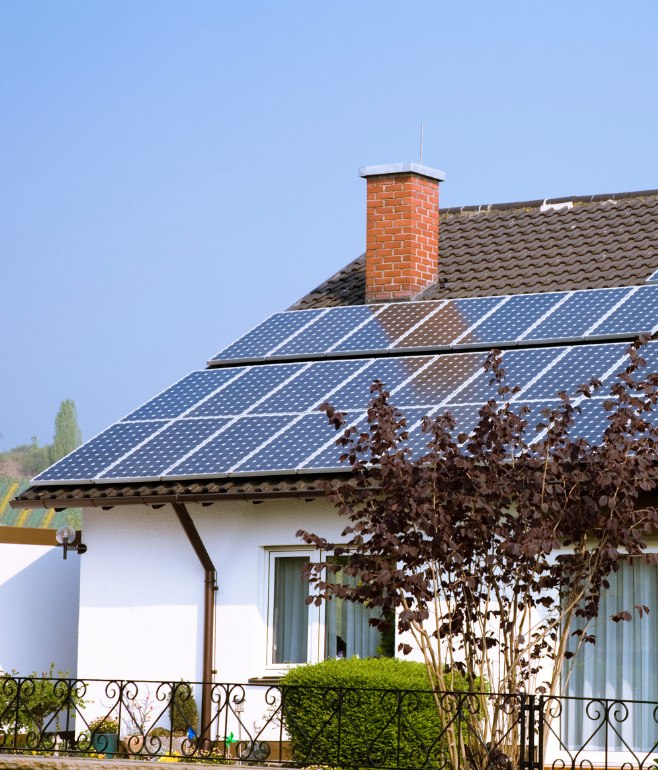
There are various issues that affect the price, such as how many solar panels you need, so we can only offer a rough estimate here. To get an accurate figure that fits your situation, get in touch and let us know the details. We'll talk you through the pricing details and explain how you can get the most out of your solar panel system.
Here are a few price examples to guide you:
We have a more detailed article for you entitled “how much does a solar panel installation cost” should you wish to dig deeper.
The peculiar thing about solar PV is that the more panels you have, and the more energy they produce, the more cost-effective the system. This means that although you'll pay more for installing solar panels, the quicker you'll recover that investment.
Again, these are only ballpark figures, as there are other factors that will affect the cost, such as the type of roof material, the angle of the pitch, the size of the array, and the power output of the panels.
Note: the government has scrapped VAT on solar panel installation until 2027, potentially saving you up to £800.
In almost all cases, domestic solar panels come under permitted development, meaning that they don't require planning permission from Westbury Council provided they stay within these restrictions:
If your solar panel installation falls within these criteria, then you shouldn't need planning permission.
Even so, there are a few points where solar installations might need permission to go ahead.
For example:
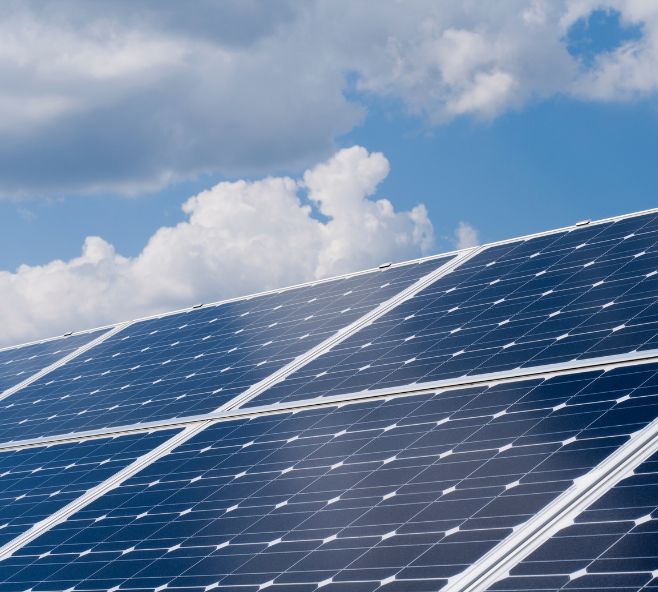
As the solar panels will need to be set on a frame to produce an effective angle for maximum power output, they will obviously extend more than 0.2 metres above the roof line, so they fall foul of the permitted development rules.
These are subject to special regulations that restrict any alterations to the facade, roof and even the grounds. For listed buildings, you need listed building consent first and then planning permission. In conservation areas, you need to make sure that the solar panels won't alter the outward appearance. In effect, as long as they aren't visible from the highway, they should be fine.
It might still be possible to have solar panels installed, but each planning authority might have its own local stipulations.
It's always best to liaise with your local authorities before arranging any work.
If your solar panels are to be set on the ground there are certain rules that apply.
Basically, as long as the entire array is less than nine square metres in size, you shouldn't need planning permission. Even so, it's a good idea to check with your local planning office beforehand.
If you intend to have more than one array (that is, a second, separate solar panel installation), you will definitely need planning permission.
If you need any advice on this (or any other matter relating to solar panels) please speak to our friendly team who will explain all of the ins and outs of planning permission red tape.
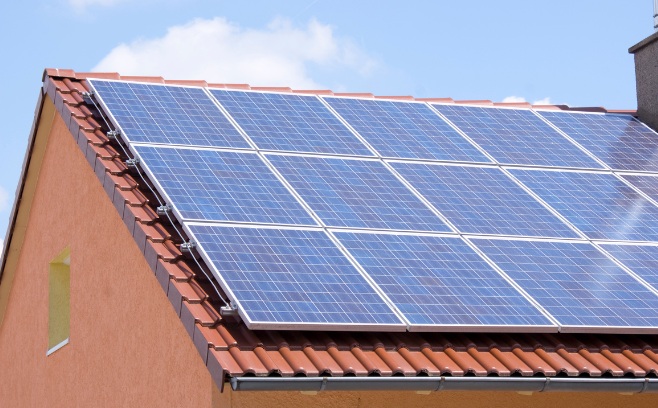
Under optimum conditions, your solar panels will generate electricity to meet all your daily energy needs - and more besides. By installing battery storage as well as solar panels, you can store any surplus electricity and sell this back to the national grid.
This is an excellent way of making money - you are effectively selling free electricity! In fact, most people recover the initial cost of solar panel installation within the first 15 years.
The Smart Export Guarantee (SEG) scheme replaced the earlier Feed-in Tariff (FiT) scheme in January 2020. Both were designed to encourage people in Westbury to invest in renewable energy by offering payment incentives for excess electricity generated by solar panels. In a way, the Feed-in Tariff was better, as rates were fixed.
Under SEG, electricity suppliers can set their own rates for tariffs, so it pays to search for the best one. We have a post on the “smart export guarantee rates”.
In all likelihood, new and better incentives will be introduced as the government pushes to achieve its environmental targets for 2030 and beyond.
Although a PV solar panel system will work without one, you'll need solar battery storage if you want to sell electricity to the grid. This battery will keep any energy that you don't use, allowing you to access this at night or on gloomier days when electricity generation is lower.
However, these batteries don't come cheaply at the present time. Depending on the size and type you need, they will cost between £1,200 and £6,000, which is a hefty investment. They also have a shorter lifespan than the solar panels themselves, typically lasting between 5 and 15 years. Most domestic solar panels will last between 20 and 30 years, maybe longer, before they need to be replaced.
While this might put you off the idea, there is some positive news in that battery technology is always advancing rapidly. In the very near future, battery storage is likely to be cheaper and more efficient.
As there are very few moving parts, solar panels require very little maintenance. Ideally, they should be inspected every three to four years for any damage, and given a gentle wipe to remove dust and dirt. Keeping the solar cells free from dust helps them to run efficiently, meaning more solar power is absorbed and turned into electricity.
Although you can clean the solar panels yourself, it's best to check the details of any warranty, as this could be voided if you cause any damage to the solar panels during the cleaning process.
It's a good idea to keep any nearby trees pruned to stop branches and debris from dropping onto your solar panels, as this could damage them or reduce their efficiency.
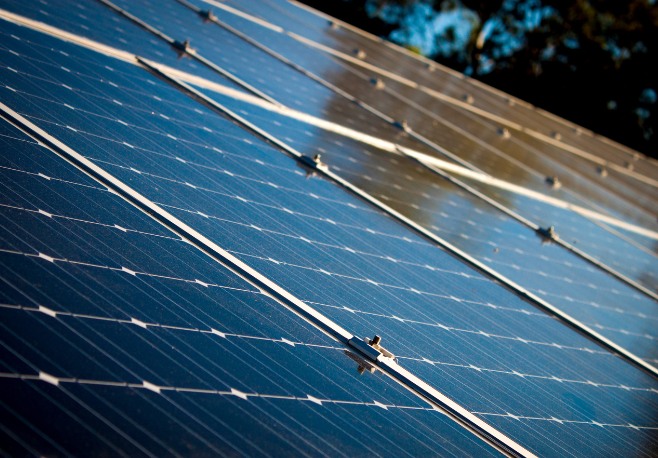
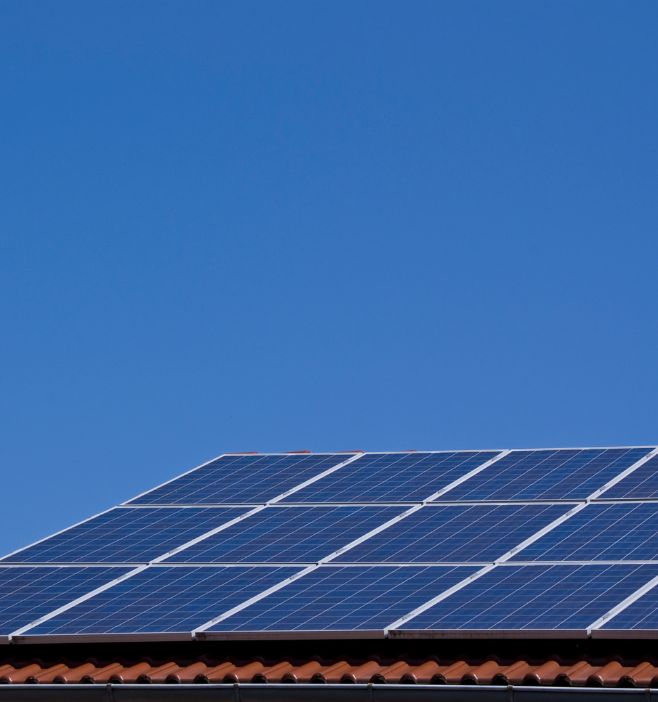
Yes, without question! They can help you live a more sustainable life, cut your electricity bill, and even charge your electric vehicle.
If you can comfortably cover the initial costs, solar PV panels are a worthwhile investment. This renewable energy source is rapidly expanding in the UK as more people seek to become greener and reduce their energy bills.
The only exceptions would be if your property had an unsuitable roofing material, was too old and unsafe, or you were planning to move house in the next few years.
Even so, if you do install solar panels and intend to move house within five years or so, you could boost the value of your property by several thousand pounds. Recent estimates suggest that solar panel installation pushes up the price of an average house by 4.1%!
The main benefit of solar PV panels overall is that you can slash your electricity costs drastically. In the last decade, the biggest six energy companies have raised energy prices by a staggering 60%, and this doesn't look set to change any time soon.
Once the solar installation process is complete, you essentially get free energy. And if you sell any excess electricity back to the energy companies, you will recoup your original expenditure even quicker.
Alongside wind and wave power, solar energy is on course to deliver more of our energy needs in the future. It's clear that dependence on fossil fuels must end, and as a result, more of our energy will come from green technology.
Schemes like the Smart Export Guarantee will become more widespread, as future governments push the UK towards a sustainable energy supply.
The fact is that an hour and a half of sunlight provides more energy than we use in an entire year. And that's not just in the UK - that's the whole world!
That's why Skylamp Solar is proud to be a part of the solar electricity revolution, installing the best solar panels and photovoltaic systems professionally and expertly.
By now, you should have more than enough information on solar PV panels to decide whether it's right for you.
In most cases, it makes a lot of sense.
Here's a brief recap of the facts to guide you:
This paints a very positive picture of solar panels, but these are all still valid facts nonetheless.
In fairness, installing solar panels isn't exactly inexpensive, but it is a long-term investment that's well worth considering. With our help, you can discover which is the best-sized system for your needs, and we will show you how to get the most out of your solar panels.
Of course, the decision is yours. But the evidence speaks for itself clearly: solar panels are a great investment.
The only real obstacle to getting solar panels is if your roofing material is not suitable, your roof is too old and unstable, or your financial situation doesn't allow for such an investment.
If the last point is relevant, check out schemes like EC04, Green Deal and LA Flex as these could offer a way for you to afford the cost of solar panels.
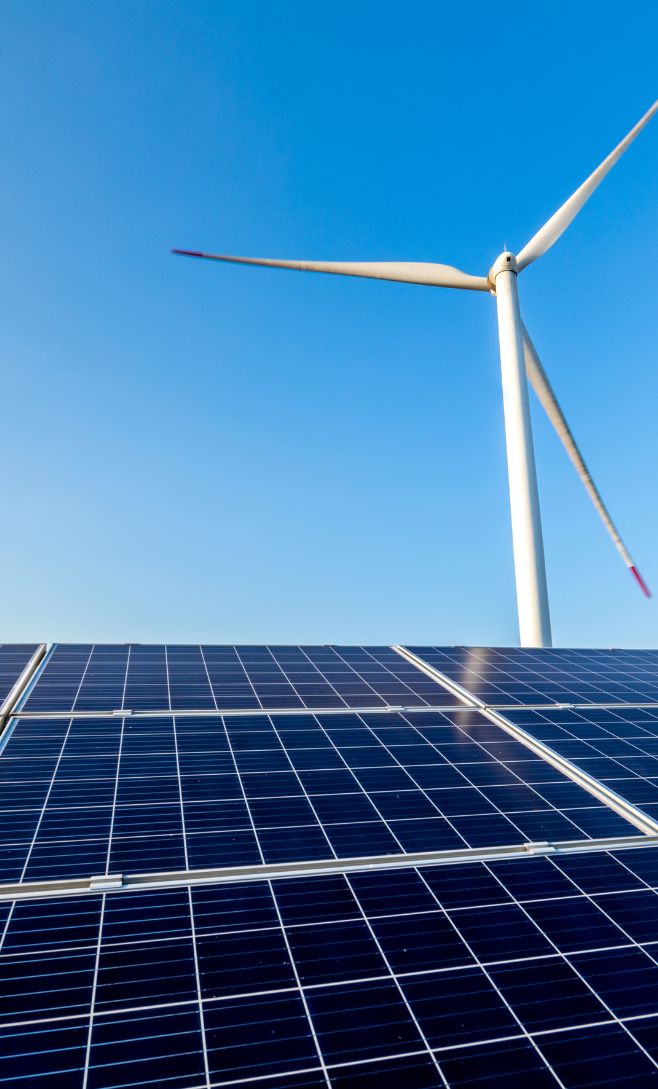
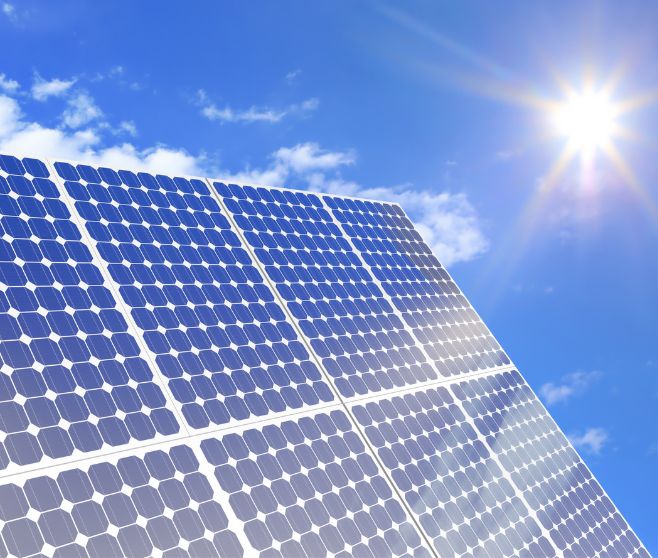
The benefits of solar PV installation are clear, and it makes sense to make the move to renewable energy and have solar panels installed in order to reduce your carbon footprint.
However, there's one very important point to keep in mind: this will only work if your solar panel system is installed by professionals. Substandard workmanship will result in poor operation, a lack of efficiency, and costly repairs.
It is essential that you use a respected, reputable company, like Skylamp Solar. We ensure that all work is undertaken competently and efficiently, leaving you to enjoy the benefits of your solar PV installation.
So, don't gamble on your future energy needs, or your investment! We'll guide you through your solar journey from beginning to end, offering our professional advice when needed, and providing you with a cost-efficient system.
Call Skylamp Solar solar PV installers in Westbury now to save money on energy bills and contribute to a greener future.
In simple terms, it means solar photovoltaics, and it's all about catching the sun's energy and transforming it into usable electricity. We have covered this exact question in detail in our blog. It's a hefty read!
Typically people tend to put them on the roofs of their homes but you can also place them on land, outhouses and sheds as long as you have sufficient angle for them to catch the sun.
No solar panels do not devalue your home, they are an investment and an investment that saves money on the home's energy costs so they are very likely to make your property a more attractive investment.
The schemes for solar panel grants are changing all of the time so you would be best to speak to us about this but we also cover it in our blog post that we use for updates.